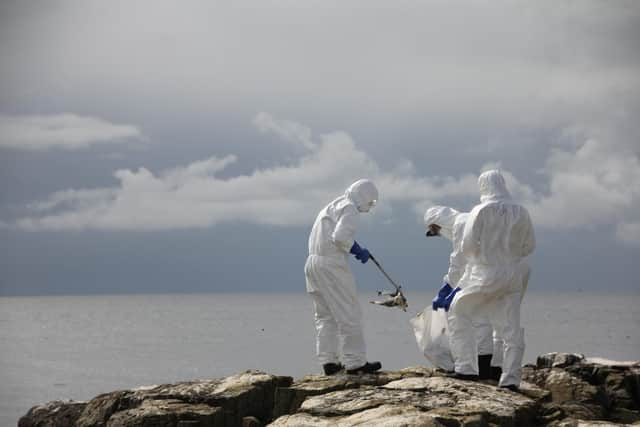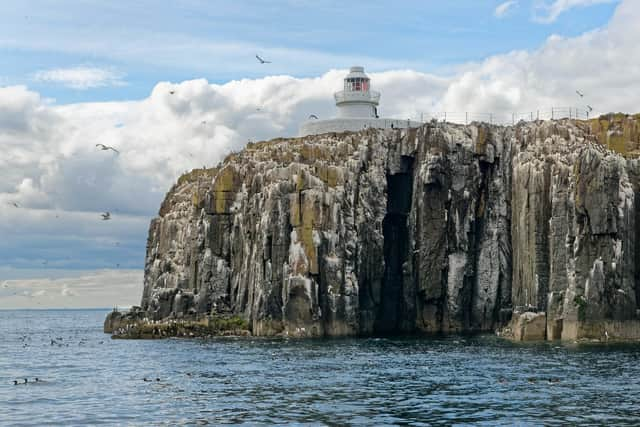National Trust reveals devastating impact of bird flu on the Farne Islands and other seabird colonies
and live on Freeview channel 276
Last year the conservation charity saw the disease rip through many species of seabirds on the Farnes where over 6,000 birds perished due to the disease, but thankfully other sites remained largely unaffected.
This year the number of dead birds picked up on the Farne Islands is just over half that number (3,647) – in part due to the regular pick-ups of dead birds by the ranger team in efforts to stop the spread of the disease.
Advertisement
Hide AdAdvertisement
Hide AdBut it’s a much bleaker picture for other sites including Long Nanny, at Beadnell.


Harriet Reid, area ranger on the Farne Islands, cared for by the National Trust said: “Migrating seabirds such as kittiwakes, puffins and terns return to the Farnes each year in March for the breeding season.
“This year we were anxious to see whether we’d once again witness the tragic impact of the disease on the returning seabirds after the disease hit us hard last year.
“As soon as we became aware of the presence of avian flu within the bird population, we did everything possible to restrict the spread of the disease and closed the island to visitors. This meant less disturbance for the vulnerable colonies, and we took the decision to pick up dead birds to try and counter the spread of the disease.
Advertisement
Hide AdAdvertisement
Hide Ad“Removing the seabirds as soon as we find them, does seem to have made a difference – the number of dead birds picked up on the islands is down by 39% on last year - but we need to rapidly understand what more we can do to protect these precious seabirds.


“Currently there is little solid guidance and we’re fighting against time to prevent a long-term impact on some populations, particularly those species which are already struggling due to other pressures such as climate change – like the Arctic tern, and those seabirds such as puffins which only lay one egg and fledge one chick per year.
“Last year it was the guillemots and kittiwakes that were most impacted. This year however it was the kittiwakes and large gulls ie, herring and lesser black backed gulls, which are resident here for much of the year which have seen the biggest losses, followed by the Arctic terns who migrate here from Antarctica.
"We don’t know for sure why this is the case, but it seems that the disease is ripping through different species over time, possibly as immunity builds in previously impacted species.”
Advertisement
Hide AdAdvertisement
Hide AdThere is currently no way of protecting seabirds against the spread of the disease.
James Porteus is area ranger at Long Nanny which is home to Britain’s largest mainland colony of Arctic terns, typically welcoming around 3,000 birds back from wintering grounds in Antarctica to the breed each year. It is also a nationally significant site for little terns – Britain’s second rarest breeding seabird which migrate here from the west coast of Africa.
This year over 1,300 Arctic terns died with the ranger team collecting 1,066 chicks and 263 adults, as well as 19 little tern chicks and 10 adults.
James commented: “We started to see birds showing signs of the disease in late June and it was absolutely heartbreaking to witness so many birds, particularly Arctic tern chicks, succumb to the disease.
Advertisement
Hide AdAdvertisement
Hide Ad“What is really concerning is the number of both Arctic and little terns that we have lost in relation to the respective populations that typically return here to breed.
“At least 8% of the breeding population of Arctic tern adults died this season, along with roughly 40% of the Arctic tern chicks. Similarly, the losses of little terns equate to 13.5% of the breeding adult population.
"This is extremely worrying, especially when you consider that these fragile seabirds are already having to deal with a whole host of other challenges including the impacts of climate change and extreme high tides wiping out nests at critical times during the breeding season.
“This year's losses could take years to recover from, and that’s before we consider how this indiscriminate disease might impact the colony once again next year.”